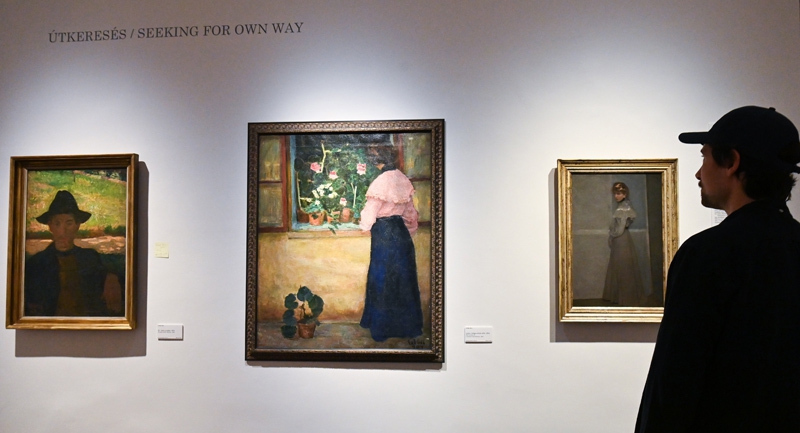
Best of Budapest & Hungary
Measure of Quality
Renewed Czóbel Exhibition in Szentendre
From Saturday, a new permanent exhibition entitled 'Palettes', presenting Béla Czóbel's artistic and social contacts, is on display at the Czóbel Museum in the town of Szentendre, north of Budapest.
The exhibition presents the relationships Béla Czóbel and his wife, Mária Modok, developed with contemporary artists during their years in Paris and Hungary, including Szentendre, art historian Brigitta Muladi, curator of the exhibition, told MTI.
Through the works of various artists, the exhibition puts the relationship between Czóbel and Modok into context and makes the artistic environment surrounding the couple visually perceptible, focusing on the years in Paris and Szentendre. The connections draw this web associatively, highlighting a particular node, and thus the 'capsule exhibition' of contemporary friend Károly Kernstok or József Rippl-Rónai, who confirms Czóbel's first steps in painting, becomes the starting point of the exhibition, and the system of connections is then revealed from there, which includes works by Róbert Berény, Margit Gráber, József Egry, István Ilosvai-Varga, János Kmetty, Csaba Perlrott, Piroska Szántó, Lajos Tihanyi, Géza Vörös, Sándor Ziffer, but also some works by Baron Ferenc Hatvany, with whom he had a close personal relationship, the curator pointed out.
"The atmosphere of the Parisian period will be evoked by the original works of George Braque and a graphic art section of artist's copies of works by Henri Matisse, Amedeo Modigliani, Pablo Picasso, Auguste Renoir, Paul Cézanne and Marc Chagall. Many of them also had pictures on the walls of the studio in Szentendre, surrounded by reproductions of their Parisian friends in a kind of montage," Brigitta Muladi recalled.
The self-portraits of Czóbel and Modok will also appear in the exhibition, she continued, because it is important to see how they interpreted themselves, and the Szentendre line is also a kind of dense point. "Here, the images that offer parallels, either in terms of subject matter or location, are given a place, revealing what the artists working in Szentendre were doing at the time when most of them went to Paris and tried to absorb the impulses," she pointed out.
A timeline will help the audience find their way around, with dates, places and names to help put the mosaics together.
In the exhibition, the Szépművészeti Múzeum, the Hungarian National Gallery (MNG), the Deák Collection of the Szent István Király Museum in Székesfehérvár, the Rippl-Rónai Museum in Kaposvár, the Antal-Lusztig Collection, Gábor Klein and rare pieces from several private collections will together trace the different creative paths and common journeys of the two museums, the curator said.




